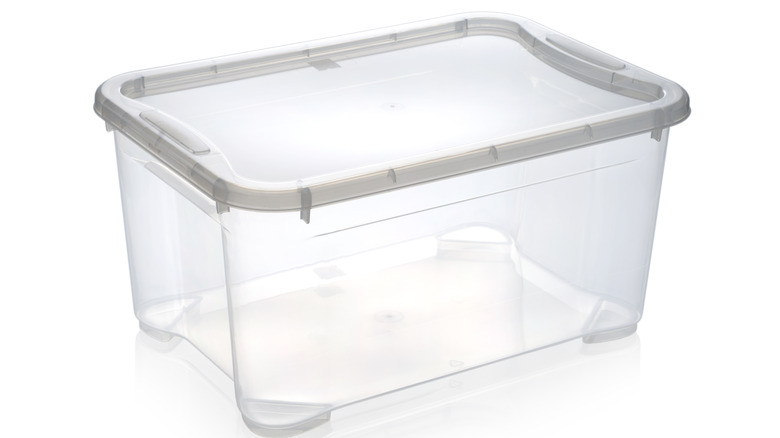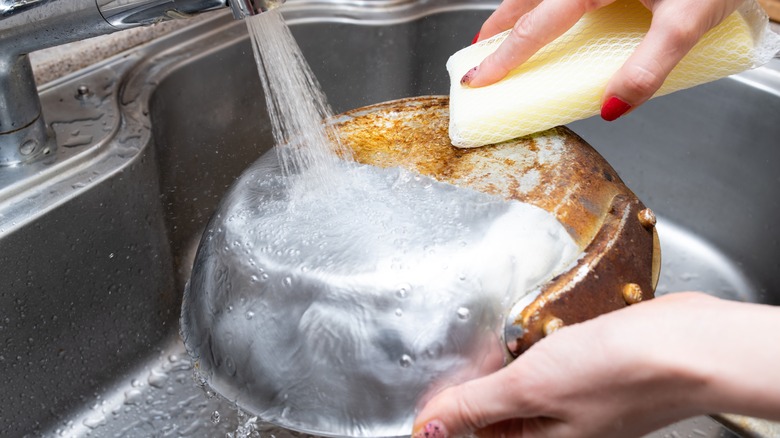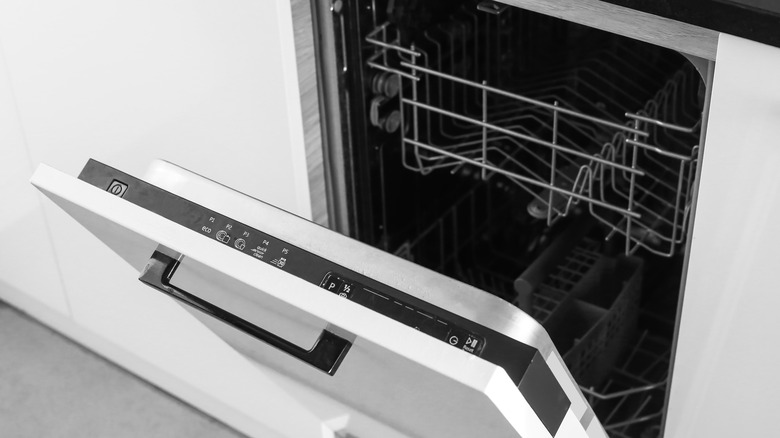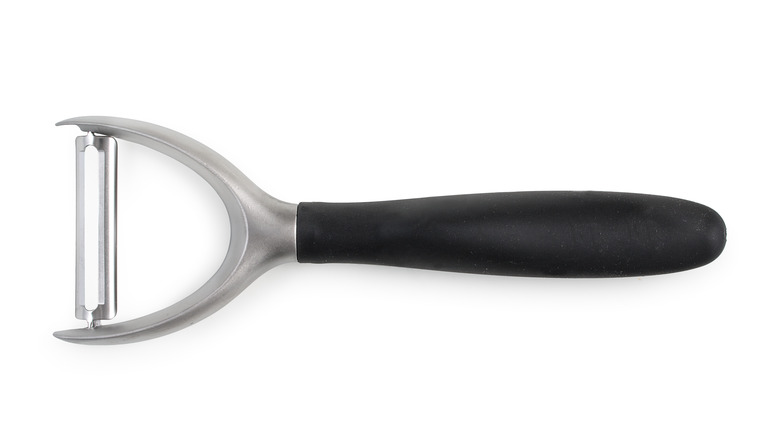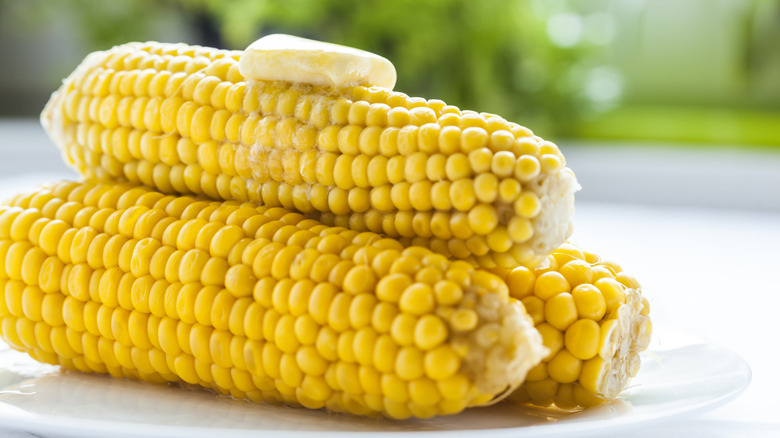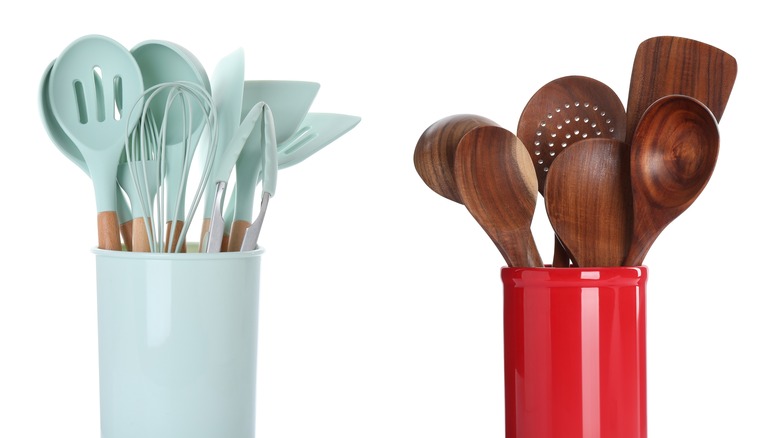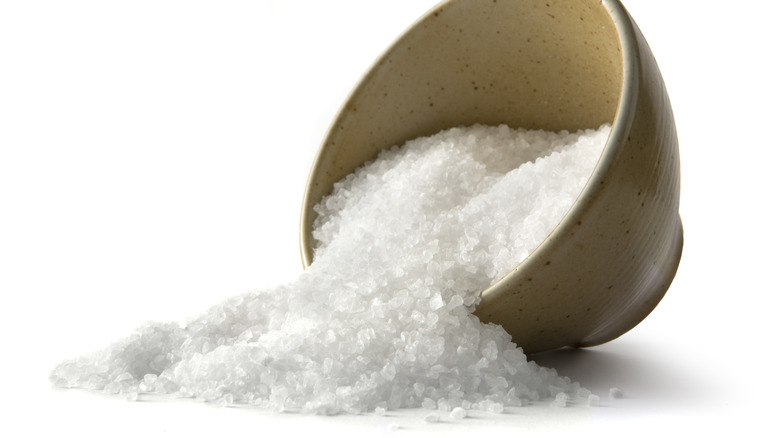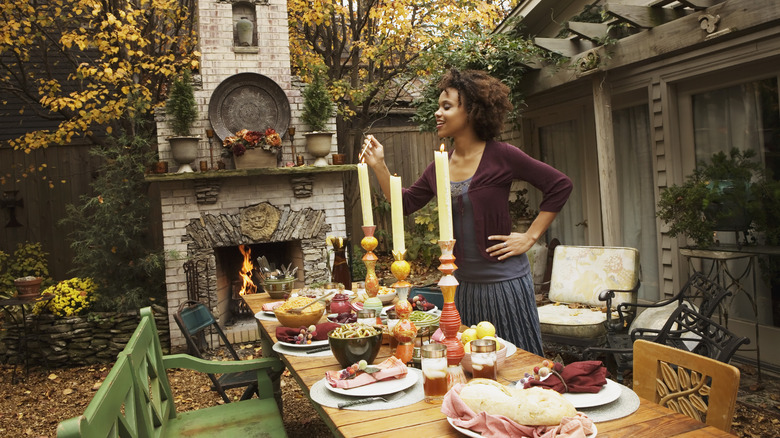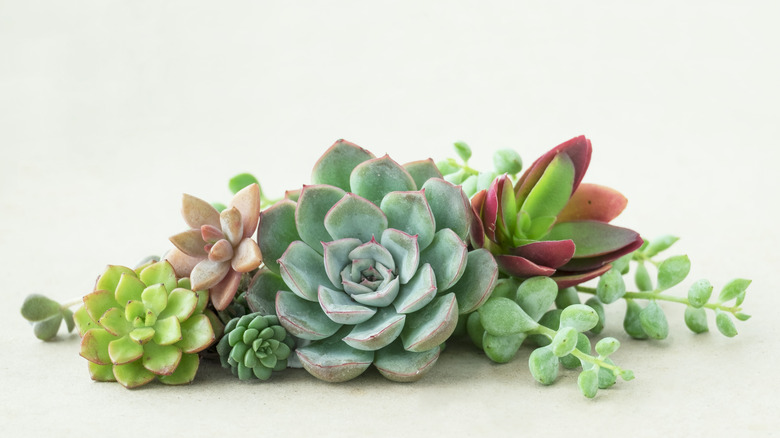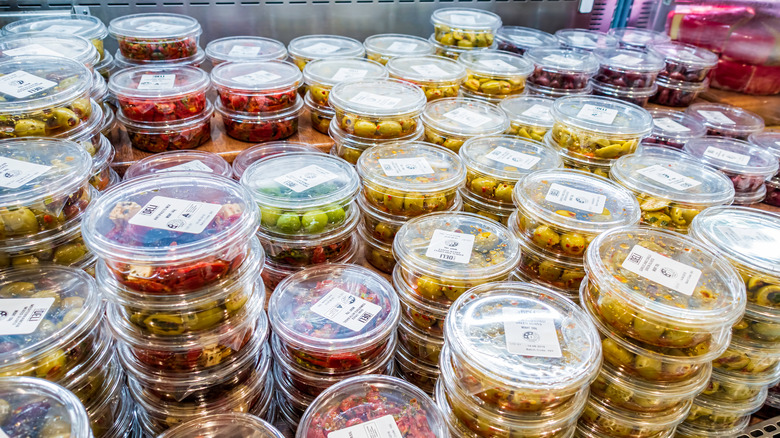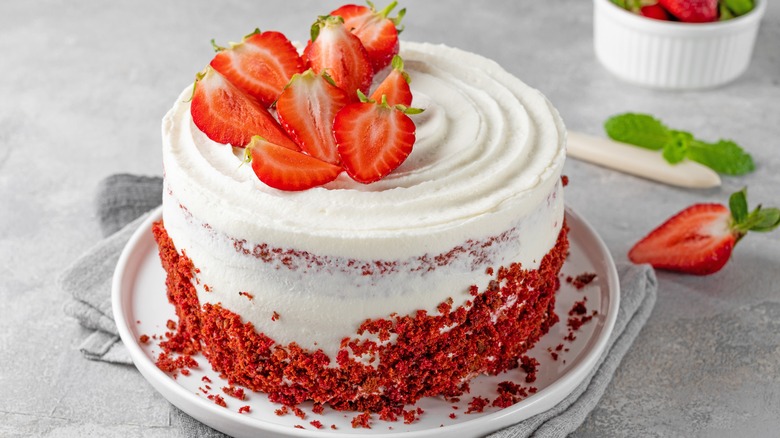Ina Garten's 12 Best Cleaning Tips For A Mess-Free Kitchen
When you go around your kitchen barefoot, as the Barefoot Contessa does, at least according to Ina Garten's moniker, then you should at least have some clean floors to walk on. Although we know that she prioritizes all things related to gastronomy and cocktails, it's clear from Ina Garten's various shows that she likes to work in a clean and neat environment, and that she always provides such an environment for her guests, not to mention her remarkable decorations, all of which require a clean slate.
In order to achieve her signature clean and simple look, one must run a tight ship, which is to say, a clean and neat kitchen. Because in the realm of culinary excellence, one cannot overlook the significance of an immaculate kitchen, and this is where Ina Garten's wisdom on cleaning comes into play. In her inimitable style, she approaches the subject of cleaning with the same finesse as she does her delectable dishes. For her, it appears that a well-organized and pristine kitchen is the canvas on which the flavors of her culinary creations come to life. So let's look at some of the best tips and tricks Ina Garten uses to keep her kitchen clean and organized, even as she's cooking up a storm.
1. Keep pantry items in clear plastic containers
Good cooking comes a lot easier when all your ingredients are organized, easy to reach, and easy to find. Ina Garten knows this better than anyone, which is why she recommends storing pantry items in clear plastic containers, thereby making it easier to spot your necessary ingredients right away just by glancing inside your cupboard. In particular, as Ina says on her Instagram post on spring cleaning her pantry, "It's easier to see what I already have when I'm making a grocery list!"
Two items she singles out as requiring clear plastic containers are chocolate chips and dried beans, and it's easy to see why. Open containers of these delectables can easily topple over, sending their contents scattering across the pantry shelf. Placing them in a clean plastic container will not only allow you to keep an eye on their quantities and know their locations, but their sealable lids will help you make sure nothing gets out — or in. These containers are also great if you're dealing with a small pantry space. They can easily be stacked, and their transparency will allow for a clear view of all your stock without having to shift through rows of boxes.
2. Throw away old oils and baking soda
Keeping a mess-free kitchen also involves keeping a mess-free pantry. To that end, it's important to go through your stock every few months and weed out the items that have gone bad or are likely to have become inert. In a recent Instagram post, Ina Garten singled out two particular pantry items for this cull: old oils and baking soda.
First of all, oils can go rancid in six months or less, including fancy cold-pressed extra virgin olive oils, unless stored in the refrigerator. If you cook often, chances are that you go through a bottle of olive oil in far less than six months. But if you have any other oils stashed away, like that rich walnut oil you purchased after reading some health blog or other but then immediately forgot about, you might want to check on their viability. Baking soda, on the other hand, won't look, smell, or taste any different than when fresh off the grocery store shelf, but it also won't rise your cakes or cookies. After about half a year, it basically becomes ineffective. Keep your kitchen clean and neat by removing these now-useless items to make room for the ingredients you're actually going to use.
3. Hand wash your pots and pans
As much as we try to avoid foods sticking to the pan, sometimes it happens. In those instances, your pot or pan might end up with some burnt onions stuck to the bottom, or some overly enthusiastic bits of chicken fond. In those instances, according to Ina Garten, and in most others, actually, it's not a good idea to put your nice set of pots and pans in the dishwasher.
Rather, she suggests hand washing each and every item. That might seem like a bit of a hassle, but it gets the job done more effectively, especially in the case of food stuck to the bottom of the pan, and it keeps your cookware in better condition for longer. In fact, if you take good care of it, and it was of good quality to begin with, you may never have to replace it. As Ina explains on her website, hand washing is key because if you put a dirty pan in the dishwasher, the heat from the appliance might cause the food to cake onto the pan, potentially damaging it and making it harder to later remove that grime. On ther other hand, hand washing is simple, because all you have to do is soak the pan in hot water and soap overnight, and the next morning everything will come off with a few sponge strokes.
4. Do put sheet pans in the dishwasher
On the other hand, sheet pans can safely go in the dishwasher, and you won't even have to feel guilty about it. And if you've ever stuck a lovely turkey in the oven on a shiny new sheet pan, just to pull it out and find it irretrievably browned, you'll be glad to hear about this tip.
In fact, you don't have to put up with those brown and grimy sheet pans anymore. They're not just a fact of life that you have to endure, like Mondays, or like the staining that occurs on pizza stones. On her website, Ina Garten suggests scouring the pans with a Brillo pad and then simply popping them in the dishwasher. Alternatively, you can ascribe to the notion that "an ounce of prevention is better than a pound of cure" and line your sheet pans with parchment paper before you start baking those chicken thighs or roasting those crunchy potatoes.
5. Replace your vegetable peeler once a year
If you make a lot of apple pies or roasted carrots, you're probably going to need to replace your vegetable peeler at least once a year. You may not notice it as you slowly use this tool over time, but the blade does eventually get dull, and sometimes even rusty. That's not the kind of ingredient you want to be adding to your food. Plus, it may take you a lot longer to peel those pounds of potatoes with a dull peeler, and who wants to put up with that?
Instead, Ina Garten suggests replacing your peeler in order to make your job easier and to keep potentially rusty kitchen tools out of your drawers. The task shouldn't be too much of a heavy lift, either, since peelers tend to be relatively inexpensive and cheap to replace. Just be sure to pick out a model that won't set you back too much. Since it's not advisable or convenient to have your peelers sharpened, it's not worth splurging on this particular kitchen implement.
6. Use a sheet pan and towel to neatly de-kernel corn on the cob
Loose corn kernels tend to scatter everywhere and get into those nooks and crannies where the sun don't shine. Often, they stay there, in the no man's land between the fridge and the wall, or in the dark reaches of the unfathomable space behind the counter.
Keep food bits out of those hard-to-reach places by following a few key rules. One of them, as recommended by Ina Garten, is to use a sheet pan and a towel to cut off your fresh corn from the cob. This method is honest and open because it accepts that kernels will go flying everywhere and attempts to work with that reality instead of fighting an unwinnable war against it. All you have to do is lay your sheet pan on the counter, cover it with a towel, stand your corn on the cob vertically, and cut away the kernels. They'll fall messily onto the towel, but they will remain contained within the sheet pan so that all you'll have to do is lift the towel and pour the kernels into a bowl.
7. Keep utensils in crocks on the counter
When chefs talk about having a neat and organized kitchen, they mean every inch needs to be neat and organized, including the insides of cupboards and drawers. To that end, Ina Garten has a simple but effective way to steer clear of those messy kitchen tool drawers where the egg beaters get tangled up with the pasta forks.
First of all, procure yourself two crocks –- they'll have to be sturdy enough to accommodate a fair number of kitchen utensils, and attractive enough so that you feel comfortable leaving them out on the counter, within easy reach of your prime cooking spot. Second, dive into your messy drawer of tools and take everything out, because you're going to need to rearrange a few things. In fact, Ina Garten suggests dividing your utensils by material, with steel items going in one crock, and wood ones in another. Or you could split them up according to how often you use them, or in line with whichever principle works best for you. Just remember that splitting the kitchen tools between two crocks helps prevent the overcrowding, and eventual tangling, that was happening out of sight in your drawer.
8. Store some salt in a small dish by the stove
You can avoid scattering salt across your countertop every time you start cooking. All you have to do is keep a little dish by the stove and fill it with salt whenever needed, as Ina Garten does. That way you don't have to reach into god knows which corner of the pantry to grab a pinch of salt from a box, inevitably dropping some on the way to seasoning the food in your pan.
Just make sure to keep the dish pretty and small. Pretty because you're going to have to look at it every day. And small because you don't want to leave too much salt out for too long. Salt tends to absorb a lot of moisture and become gloopy, leading to uneven clumps or to a problem with shaking, if you're keeping it in a salt shaker. The best way to keep your salt stores in good condition is to put them in a glass air-tight container kept in a cool, dark environment. If you want to be ironic about it, you can even add some grains of rice. This is not just for show –- rice does, in fact, absorb moisture, which is why you may have seen this method employed in restaurant salt shakers.
9. Use numbered plates to organize dinner parties
Dinner parties can get a little stressful if you're not a professional, and sometimes even if you are. Ina Garten herself has admitted to feeling a little anxious about hosting dinner parties, as she fears some of her guests might be expecting something fabulous given her reputation, while she knows that like any human being, she's not able to deliver 100%, 100% of the time.
Take away some of that anxiety by keeping things simple, clean, and organized. One piece of advice our chef has in this regard is to use plain, numbered plates. The plain plates will set a more relaxed tone for the evening, helping you to manage your guests' expectations in terms of what kinds of bells and whistles to look forward to (or not to look forward to). The numbers on the plates can help you keep mental stock of who is eating what, and who may have a dietary restriction you need to think about.
10. Keep table centerpieces simple
In a similar vein to the numbered plates, Ina Garten recommends keeping your centerpieces simple at your next dinner party. After all, you want your guests to be looking at each other, and not trying to communicate through a wall of elaborate, distracting bouquets. For inspiration, look to her Instagram feed, where she regularly posts pictures of her table spreads. As examples of the simplicity of her style, consider a Thanksgiving 2022 post where she set the table with color-block napkins, traditional cutlery, and fine china plates, and simply added a few small gourdes and flowering branches, laid out horizontally, as a centerpiece.
In another example, for a springtime take, a post from May 2021 shows an outdoor tabletop adorned with nothing more than two vases of purple chive blossoms and the strictly necessary accouterments required to eat a civilized dinner. When you put so much elbow grease into preparing a delectable meal for six people or more, it's only human to then lack the energy to realize an elaborate centerpiece. But maybe that's a good thing.
11. Use deli containers to store leftovers
Ina Garten is nothing if not practical and down to earth, so it should come as no surprise that she chooses humble, small, round, and disposable deli containers from her food delivery, or actual delis, to store leftovers from her own cooking. And the good news is that if you order food delivery regularly, you'll be able to put together a collection of deli containers in no time.
But the main point of this exercise is to ensure your fridge remains clean, neat, and stackable, which maximizes space. It just so happens that most deli containers come in standard shapes and sizes, making it easy to pile them on top of each other without having to worry about spills. Meanwhile, the containers are see-through, which means that if you pick one up you can immediately tell if it's the leftover baked ziti from last night or the cauliflower soup from last week. And don't forget about the freezer. This space, too, needs to remain neat and orderly, which is how deli containers come in handy again. You can use the containers to store single servings of lasagna for a quick weeknight meal, or you can do some cooking prep ahead of time and freeze your chopped onions in a deli container until it's time to use them.
12. Ice your cakes over parchment paper
Cake icing, in all its glory, is another food that can be more trouble than it's worth in terms of kitchen cleanliness. But with Ina Garten's method for decorating cakes over parchment paper, you'll be able to have your cake and eat it with icing, too.
You don't have to be a master at cake icing in order to pull this off, although, alas, it won't make you better at actually icing cakes –- it'll just make sure the icing stays on the cake and doesn't get all over the cake stand, or your countertop. The trick is simple: just cut some parchment paper into triangles and place them on your cake stand, or wherever you plan to house your cake while it's not being eaten. Then place the cake on top and begin your icing maneuvers. Once the deed is done, simply remove the triangles and toss them. You'll be left with a perfectly iced cake, and not a drop out of place. But why bother cutting triangles, you ask? This will allow you to pull out the smaller pieces as you work around the cake rather than having to negotiate the dramatic tablecloth-like operation you'd have to perform if you worked with a plain, large rectangle of parchment paper.

